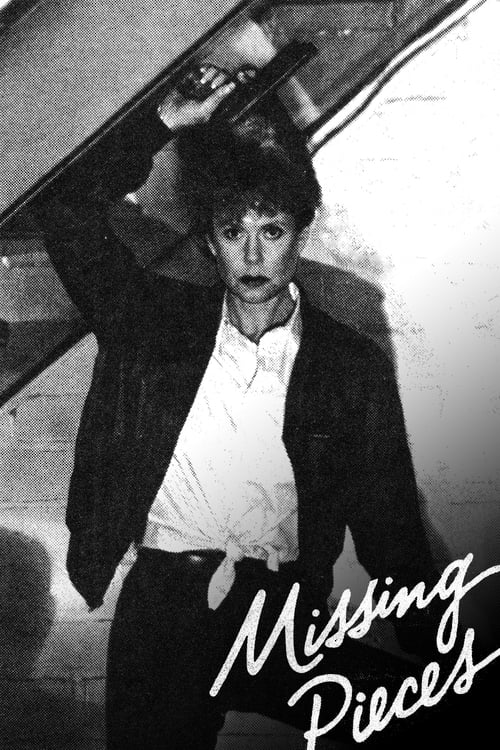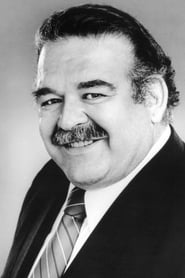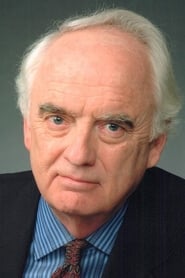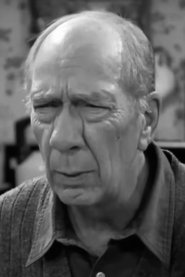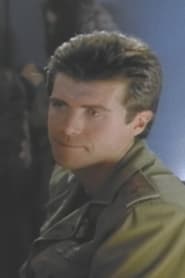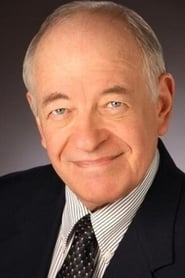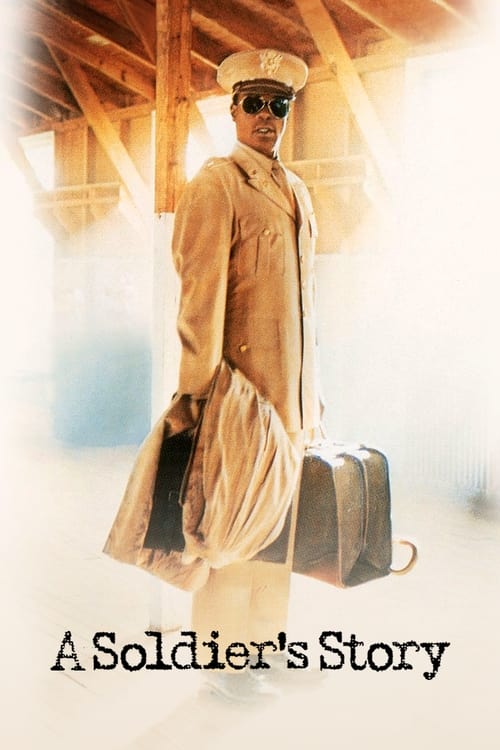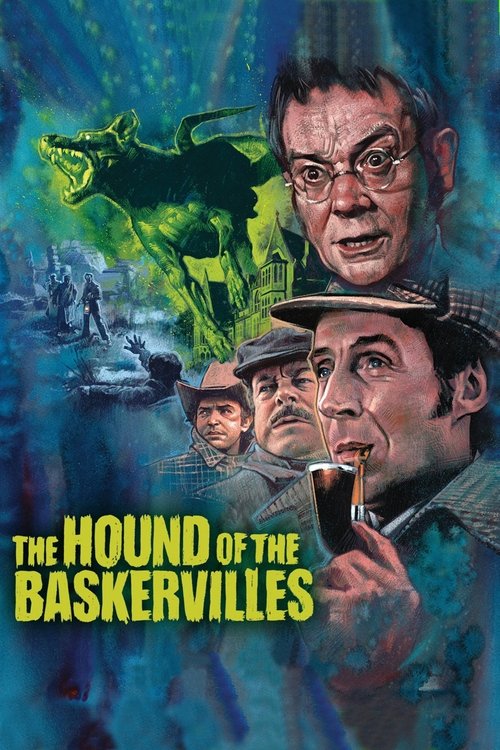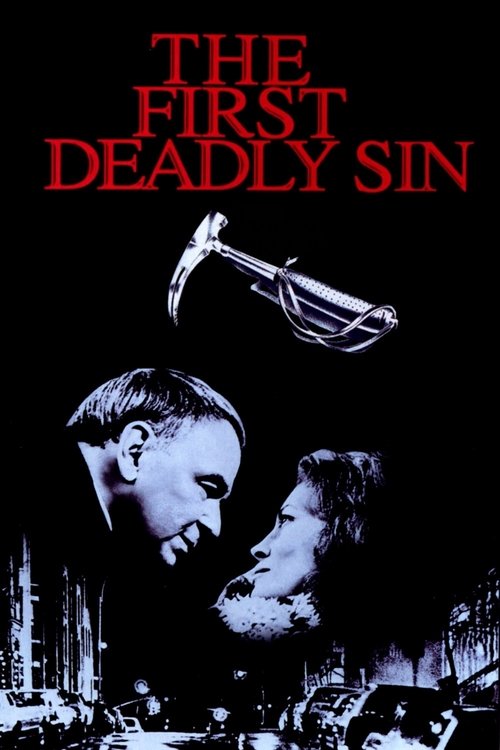
Ask Your Own Question
What is the plot?
The story of Missing Pieces (1983) unfolds in early 1980s Los Angeles, steeped in the gritty atmosphere of noir detective tales. It opens on a somber note: Sara Scott, a private detective played by Elizabeth Montgomery, is wrestling with the brutal murder of her husband, Andy Scott, a political reporter whose death remains shrouded in mystery. The city's underbelly hums quietly in the background as Sara sits in her modest office, the weight of loss heavy in the air. Her voice, tinged with quiet determination, narrates the scene with a dry wit: "Tequila? It's a little early for me. It doesn't go with toothpaste." This line sets the tone--wry, weary, but resolute.
Sara's grief is raw but focused. Andy's murder is not just a personal tragedy; it's the spark that ignites her quest for truth. She's no stranger to investigation, having worked alongside a grizzled private investigator, played by Ron Karabatsos, whose voice-over narration weaves through the film like a Raymond Chandler novel. His commentary adds a layer of noir sophistication, even as the case grows increasingly labyrinthine.
Into this tense world steps Helen Richman (Leigh Hamilton), a woman desperate for answers about her own husband, James Richman. Helen hires Sara to follow James, suspecting he's involved in something dangerous. James, a man cloaked in secrecy, soon becomes a pivotal figure in Sara's unraveling investigation. Sara's office and home become the nerve center of her inquiry, a place cluttered with files, photographs, and the ghosts of conversations past. From here, she moves through the city's shadowy corners--seedy bars, anonymous apartments, and the Richmans' upscale residence--each location peeling back layers of deception.
Sara's pursuit is relentless. She plants a telephone bug during a daring decoy operation, feigning hysteria with a performance that's equal parts Joan Crawford's steely resolve and Faye Dunaway's seductive cunning. "I'm a cross between Joan Crawford in Mildred Pierce and Faye Dunaway as Joan Crawford," she quips internally, a moment of dark humor amidst the tension. This bug becomes a vital tool, capturing clandestine conversations that hint at a sprawling conspiracy involving political corruption and drug trafficking.
The investigation's stakes escalate sharply when James Richman is found murdered, his death echoing the violent end of Andy Scott. The connection is undeniable; these deaths are threads in the same dark tapestry. Sara's confrontation with this reality is visceral--she moves from grief to fierce resolve, knowing the killer is not just a lone murderer but part of a corrupt network. The city's political elite, tangled with drug interests, loom as shadowy puppeteers behind the scenes.
Sara's encounters grow more dangerous. In one chilling scene, she faces a man intent on killing her. Instead of fighting, she disarms him with vulnerability, undressing and allowing her mouth to be photographed in extreme close-up--a haunting image of manipulation and survival. This moment reveals Sara's resourcefulness and courage, turning her vulnerability into a weapon.
Throughout the film, the private investigator's narration reveals an unpleasant memory tied to the case, deepening the personal stakes and adding layers to the mystery. This narrative device enriches the story's texture, blending past and present, memory and reality.
As Sara digs deeper, she uncovers bugged telephones, hidden documents, and secret communications that expose the extent of the corruption. Helen Richman's motives come into sharper focus, revealing complexities in her marriage and her own entanglement in the conspiracy. The truth emerges: Andy Scott's murder was no random act but a calculated silencing tied to his investigative reporting on political malfeasance and drug trafficking.
The climax is a tense, tightly wound confrontation. Sara confronts the murderer--an individual deeply enmeshed in the corrupt political and drug network. The scene crackles with tension as Sara, armed with the evidence she's painstakingly gathered, forces a reckoning. The murderer is neutralized, justice served, but at a steep cost. The city's corruption is exposed, but the scars remain.
In the final moments, Sara reflects on the painful journey. The camera lingers on her face, a mixture of sorrow and steely resolve. The private investigator's voiceover closes the story, meditating on the elusive nature of truth and justice in a world riddled with corruption and loss. The film ends not with triumphant closure but with a somber acknowledgment of the personal and moral costs of uncovering the truth.
Thus, Missing Pieces weaves a complex narrative of loss, courage, and the relentless pursuit of justice, anchored by Elizabeth Montgomery's compelling portrayal of Sara Scott. Every death--the brutal murder of Andy Scott and the subsequent killing of James Richman--propels the story forward, each revelation peeling back the layers of a dark conspiracy that threatens to consume all involved. The film's rich noir atmosphere, combined with sharp dialogue and vivid emotional moments, crafts a haunting tale of a woman who refuses to let the pieces of her shattered life remain missing.
What is the ending?
In the ending of "Missing Pieces," the main character, a woman named Ellen, confronts the truth about her past and the secrets that have haunted her. She ultimately finds closure and a sense of peace, while the other characters come to terms with their own unresolved issues.
As the film approaches its conclusion, Ellen stands at a crossroads, grappling with the revelations she has uncovered about her family and herself. The emotional weight of her journey culminates in a poignant moment of acceptance and understanding.
As the final act of "Missing Pieces" unfolds, the atmosphere is thick with tension and unresolved emotions. Ellen, having pieced together fragments of her past, finds herself in a dimly lit room filled with photographs and mementos that tell the story of her family. The walls seem to close in on her, echoing the weight of the secrets she has unearthed.
Scene 1: Ellen stands before a large, weathered photograph of her parents, their faces frozen in time. The image stirs a whirlwind of emotions within her--anger, sadness, and a longing for connection. She reaches out, her fingers brushing against the glass, as if trying to touch the memories that have eluded her for so long. The camera lingers on her face, capturing the flicker of determination in her eyes. She knows she must confront the truth, no matter how painful.
Scene 2: The scene shifts to Ellen's confrontation with her estranged brother, Mark. They meet in a small, cluttered café, the air thick with unspoken words. Mark's demeanor is defensive, his body language closed off. Ellen, however, is resolute. She lays bare the secrets that have divided them, her voice trembling with emotion. As she speaks, the camera captures the shifting expressions on Mark's face--confusion, guilt, and finally, a glimmer of understanding. The tension between them begins to dissolve as they share their pain, revealing the deep scars left by their family's history.
Scene 3: The narrative then transitions to Ellen's mother, who has been a ghostly presence throughout the film. In a quiet, intimate moment, Ellen visits her mother in a nursing home. The room is filled with soft light, casting a warm glow on the frail figure of her mother. Ellen's heart aches as she watches the woman who once held so much power over her life now reduced to a shadow of her former self. They share a fragile conversation, filled with apologies and regrets. Ellen's mother, with tears in her eyes, finally acknowledges the hurt she caused, and Ellen, in turn, expresses her longing for a connection that was always just out of reach.
Scene 4: The climax of the film occurs when Ellen returns to the family home, a place steeped in memories. She walks through the familiar rooms, each corner echoing with laughter and sorrow. In the living room, she finds a box filled with letters and keepsakes, remnants of a life once lived. As she sifts through the contents, she discovers a letter from her father, revealing his struggles and dreams. This moment of revelation brings a sense of clarity to Ellen, allowing her to forgive not only her parents but also herself.
Scene 5: The film concludes with Ellen standing outside the family home, the sun setting in the background, casting a golden hue over the landscape. She takes a deep breath, feeling a sense of liberation wash over her. The weight of the past no longer holds her captive. As she walks away, the camera captures her silhouette against the vibrant sky, symbolizing her newfound freedom and acceptance.
In the final moments, the fates of the main characters are revealed. Ellen, having confronted her past, steps into a future filled with hope and possibility. Mark, after reconciling with Ellen, begins to seek his own path toward healing. Their mother, though frail, finds solace in the acknowledgment of her mistakes, while the family legacy, once a source of pain, transforms into a narrative of understanding and forgiveness. The film closes on a note of bittersweet resolution, leaving the audience with a sense of closure and the understanding that while the past cannot be changed, the future is still unwritten.
Is there a post-credit scene?
The movie "Missing Pieces," produced in 1983, does not have a post-credit scene. The film concludes its narrative without any additional scenes or content after the credits roll. The story wraps up with a focus on the emotional resolution of the characters, leaving the audience with a sense of closure regarding the plot and character arcs.
How does the protagonist's relationship with their family evolve throughout the film?
The protagonist's relationship with their family is strained at the beginning, marked by misunderstandings and unresolved conflicts. As the narrative progresses, the protagonist begins to uncover hidden truths about their family, leading to moments of reconciliation and deeper emotional connections.
What role does the setting play in the protagonist's journey?
The setting, which shifts between the protagonist's childhood home and various locations tied to their past, serves as a backdrop for their emotional journey. Each location evokes specific memories and feelings, enhancing the protagonist's quest for understanding and resolution.
What is the significance of the missing pieces in the protagonist's life?
The missing pieces symbolize the gaps in the protagonist's understanding of their past and relationships. As the story unfolds, these pieces represent not only physical objects but also emotional connections and memories that the protagonist must confront to achieve closure.
How do the supporting characters influence the protagonist's quest?
Supporting characters serve as catalysts for the protagonist's growth. Each character brings a unique perspective or piece of information that challenges the protagonist's beliefs and encourages them to confront their past, ultimately aiding in their journey toward self-discovery.
What are the key moments that trigger the protagonist's memories?
Key moments include finding old photographs, encountering familiar places, and conversations with family members. These triggers evoke strong emotional responses and lead the protagonist to confront long-buried feelings, driving the narrative forward as they piece together their history.
Is this family friendly?
"Missing Pieces," produced in 1983, is a drama that explores complex themes and emotional struggles within a family. While it does not contain explicit content, there are several elements that may be considered objectionable or upsetting for children or sensitive viewers.
-
Family Conflict: The film delves into intense family dynamics, including arguments and emotional confrontations that may be distressing for younger audiences.
-
Themes of Loss: The narrative addresses themes of loss and grief, which could be heavy for children to process.
-
Emotional Turmoil: Characters experience significant emotional pain and turmoil, which may be difficult for sensitive viewers to watch.
-
Depictions of Estrangement: The film portrays estrangement and the complexities of familial relationships, which might resonate negatively with those who have experienced similar situations.
-
Tension and Anxiety: There are moments of tension that could evoke feelings of anxiety, particularly in scenes where characters face difficult decisions or confrontations.
Overall, while "Missing Pieces" is not overtly inappropriate, its emotional depth and the nature of its themes may not be suitable for all children or sensitive viewers.

